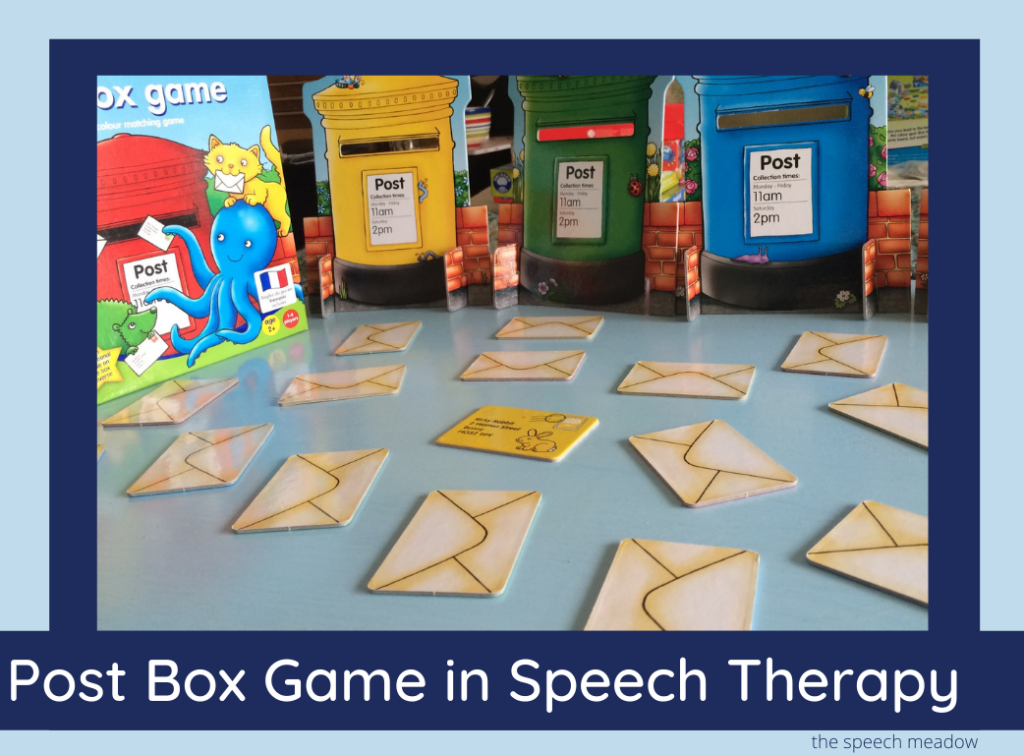
Language Activities
1. Building vocabulary. For younger children, it’s great for learning colours and animals. Most of the animals are common (e.g. pig, rabbit, dog, rhino) and great for teaching colours.
2. Expanding Sentences. Because the letters are four different colours (red, green, blue, yellow) you can start to use those colours to increase the length of sentences (E.g. “I have a red letter.”)
3. Prepositions. This is great for teaching in for those younger children. It can also be used to teach in front and behind (the cards fall behind the mailbox). I will ask where a certain card and have the children answer. A version of this is to hide the letters in various places in your therapy room. Either tell the children where they could find a letter or have the children tell you where they found the letter.
4. Following directions. This can be work on one-step directions (e.g. “Put a red letter in the mailbox.” or “Put the duck’s and the cat’s letters in the mailboxes.”). You can also work on two-step directions (e.g. “First put a red letter in the mailbox, then put a green letter in.” or “Before you put the rhino’s letter in, put the duck’s letter in.”)
5. Pronouns. I will put out pictures (a boy, a girl and a group) and divide the letters among them. The children will pick out a letter from one of the piles and have the children say who is mailing the letter. I will also put out pictures of the different animals. The children then deliver the letters that were mailed. They can then say, “She/he/they get a letter.” or “Here is your letter.” or “You get a letter” etc…
6. Possessive Nouns. The children pick a letter and look at the animal on the letter. The child then would say, “It’s the ________’s letter.”
Speech Therapy
The obvious sound to target is “L” by saying letter. I frequently incorporate the possessive noun activities into therapy which is great if you are working with mixed group. I will also take smaller artic cards I have and use removable glue dots to put them on the letter. Then have the child choose a card and then say the word. As well sometimes I will just have the children put artic cards in the mailboxes.
Lastly, I have the children help me set up the game. This is another way of targeting following directions. It is also great for working on sequencing as you have to set up the game in specific way. It can also work on some problem solving skills because the triangle supports that keep the mailbox up must be in a specific direction or the mailboxes are very wobbly and tend to fall over. As always this post does not contain affiliate links. If you are interested in other Orchard Toys that I use in therapy go here. Overall the children really enjoy playing this game and I’m able to target a wide variety of goals which is a win for all.
